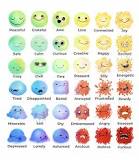The Allure of Limited Edition Prints in the Art World
Limited edition prints have become increasingly popular in the art world, captivating art enthusiasts and collectors alike. These prints offer a unique opportunity to own a piece of artwork created by renowned artists, often at a more affordable price compared to original pieces. Let’s delve into the allure of limited edition prints and why they hold a special place in the hearts of art lovers.
Exclusivity and Rarity
One of the key attractions of limited edition prints is their exclusivity and rarity. Unlike mass-produced posters or reproductions, limited edition prints are produced in a restricted quantity, making each print a valuable and sought-after item. The finite number of prints adds to their appeal, creating a sense of exclusivity that resonates with collectors looking for unique pieces to add to their collection.
Artistic Integrity and Quality
Limited edition prints are often produced using high-quality materials and printing techniques, ensuring that the integrity and essence of the original artwork are preserved. Artists work closely with printmakers to meticulously reproduce their artwork, maintaining the same level of detail, color accuracy, and texture as the original piece. This attention to quality makes limited edition prints highly desirable among art connoisseurs who appreciate fine craftsmanship.
Investment Value
For many collectors, limited edition prints offer not only aesthetic pleasure but also investment potential. As the number of available prints is fixed, their value may appreciate over time, especially if the artist gains recognition or if the edition sells out. Collectors often view limited edition prints as an investment opportunity that can provide both enjoyment and potential financial returns in the future.
Accessibility to Art Collectors
Limited edition prints provide art enthusiasts with access to works by established artists that may otherwise be out of reach due to cost or availability. By offering affordable alternatives to original artworks, limited edition prints allow a broader audience to engage with and appreciate fine art. This accessibility plays a vital role in democratizing art consumption and fostering a deeper connection between artists and their audience.
Celebrating Artistic Vision
Ultimately, limited edition prints celebrate the artistic vision and creativity of talented artists, allowing their work to reach a wider audience while maintaining its artistic integrity. Whether displayed in homes, offices, or galleries, these prints serve as tangible expressions of artistic expression and inspiration for generations to come.
In conclusion, limited edition prints offer a compelling blend of exclusivity, quality, investment potential, accessibility, and artistic appreciation that continues to captivate art lovers around the world. Their unique allure lies in their ability to bridge the gap between original artworks and art enthusiasts while preserving the essence and beauty of fine art for years to come.
8 Compelling Benefits of Investing in Limited Edition Prints: Exclusivity, Quality, and Accessibility
- Exclusivity and rarity appeal to collectors
- High-quality materials and printing techniques used
- Preserves the artistic integrity of the original artwork
- Potential for investment value to appreciate over time
- Provides access to works by renowned artists at a more affordable price
- Democratizes art consumption by making art more accessible
- Limited edition prints are often signed and numbered by the artist
- Offers a unique opportunity to own a piece of art with limited availability
7 Drawbacks of Limited Edition Prints: Availability, Cost, Authenticity, and More
- Limited availability may lead to missing out on owning a desired print.
- Limited edition prints can still be relatively expensive compared to other art forms.
- Potential for counterfeit prints in the market, affecting authenticity and value.
- Limited edition prints may not appreciate in value as expected, leading to investment risks.
- Restrictions on reproduction rights limit the flexibility of using the artwork for personal or commercial purposes.
- The exclusivity of limited edition prints may create a sense of elitism in the art world.
- Limited edition prints may have variations in quality due to differences in printing techniques and materials.
Exclusivity and rarity appeal to collectors
The allure of limited edition prints lies in their exclusivity and rarity, which greatly appeals to collectors. By offering a finite number of prints, each piece becomes a coveted and unique item in the eyes of art enthusiasts. The limited availability creates a sense of exclusivity that adds value and prestige to the print, making it a desirable addition to any art collection. Collectors are drawn to the idea of owning a piece that is not mass-produced, but rather a rare find that showcases the artist’s work in a special and limited edition format.
High-quality materials and printing techniques used
Limited edition prints stand out for their exceptional quality, achieved through the use of high-quality materials and advanced printing techniques. Artists collaborate closely with skilled printmakers to ensure that every detail, color nuance, and texture of the original artwork is faithfully reproduced in each print. This commitment to craftsmanship not only preserves the artistic integrity of the piece but also enhances its aesthetic appeal, making limited edition prints highly valued among art enthusiasts who appreciate fine artistry and attention to detail.
Preserves the artistic integrity of the original artwork
Limited edition prints excel in preserving the artistic integrity of the original artwork, ensuring that every detail, color nuance, and texture is faithfully reproduced with meticulous precision. By working closely with skilled printmakers and utilizing high-quality materials and techniques, artists maintain the essence and authenticity of their creations in each limited edition print. This commitment to fidelity not only honors the artist’s vision but also allows art enthusiasts to experience the same level of craftsmanship and emotion present in the original piece, creating a lasting connection between the viewer and the artwork.
Potential for investment value to appreciate over time
Limited edition prints offer a compelling advantage in the art world by providing collectors with the potential for investment value to appreciate over time. As the number of available prints is fixed and the demand for renowned artists’ works continues to grow, limited edition prints can become valuable assets that may increase in worth. This aspect adds an exciting dimension to collecting art, as enthusiasts not only acquire beautiful pieces for enjoyment but also have the opportunity to see their investments grow in value, making limited edition prints a desirable choice for both art lovers and investors alike.
Provides access to works by renowned artists at a more affordable price
Limited edition prints offer art enthusiasts a valuable opportunity to access works by renowned artists at a more affordable price point. By making high-quality reproductions of original artworks available in limited quantities, collectors can acquire pieces that capture the essence and vision of esteemed artists without the hefty price tag associated with original creations. This accessibility not only broadens the reach of fine art to a wider audience but also allows individuals to own and appreciate masterful works that may have otherwise been out of financial reach.
Democratizes art consumption by making art more accessible
Limited edition prints play a crucial role in democratizing art consumption by making art more accessible to a wider audience. By offering affordable alternatives to original artworks, limited edition prints enable art enthusiasts to engage with and appreciate fine art without the barriers of high costs or limited availability. This accessibility not only enriches the cultural experience for individuals from diverse backgrounds but also fosters a deeper connection between artists and their audience, ultimately expanding the reach and impact of artistic expression in society.
Limited edition prints are often signed and numbered by the artist
Limited edition prints hold a special allure as they are often signed and numbered by the artist. This personal touch adds a sense of authenticity and connection between the artwork and the creator, enhancing the value and collectibility of the print. The artist’s signature not only validates the print as a genuine piece of their work but also imbues it with a sense of exclusivity and craftsmanship. Each numbered print becomes a unique treasure, reflecting the artist’s individual touch and making it a coveted addition to any art collection.
Offers a unique opportunity to own a piece of art with limited availability
Limited edition prints offer a unique opportunity for art enthusiasts to own a piece of art with limited availability, creating a sense of exclusivity and rarity that adds to the allure of the artwork. By owning a limited edition print, collectors can enjoy the beauty and craftsmanship of a work created by a renowned artist, knowing that they are one of only a select few who possess this particular piece. This exclusivity not only enhances the value of the artwork but also provides a special connection between the collector and the artist’s creative vision, making each print a prized possession in any art collection.
Limited availability may lead to missing out on owning a desired print.
Limited availability of limited edition prints can be a significant drawback for art enthusiasts, as it may result in missing out on owning a desired print. Due to the restricted number of prints produced, popular editions can sell out quickly, leaving collectors who hesitate or delay their purchase without the opportunity to acquire a specific artwork. This sense of exclusivity and urgency adds an element of risk and competition to acquiring limited edition prints, potentially leading to disappointment for those who are unable to secure their desired piece before it becomes unavailable.
Limited edition prints can still be relatively expensive compared to other art forms.
Limited edition prints, despite their appeal and exclusivity, can still pose a con in terms of their pricing. While they may offer a more affordable alternative to original artworks by renowned artists, limited edition prints can still be relatively expensive compared to other art forms such as posters or digital prints. The cost of producing high-quality limited edition prints, coupled with the artist’s reputation and the limited number of available prints, can contribute to their higher price point. This pricing aspect may deter some potential buyers who are seeking more budget-friendly options in the art market.
Potential for counterfeit prints in the market, affecting authenticity and value.
The potential for counterfeit prints in the market poses a significant con of limited edition prints, impacting their authenticity and value. Unscrupulous individuals may produce unauthorized copies of limited edition prints, deceiving buyers with fake replicas that lack the quality and artistic integrity of the original pieces. These counterfeit prints not only undermine the artist’s work but also dilute the market for genuine limited edition prints, leading to confusion among collectors and a decline in overall value. The presence of counterfeit prints highlights the importance of thorough authentication processes and vigilant oversight to safeguard the integrity and reputation of limited edition artworks in the art world.
Limited edition prints may not appreciate in value as expected, leading to investment risks.
Limited edition prints, despite their appeal as potential investments, carry the con of uncertain appreciation in value. While collectors often view limited edition prints as a way to potentially increase their value over time, there is no guarantee that the market demand for a particular print will align with their expectations. This unpredictability introduces investment risks, as factors such as artist popularity, market trends, and print edition size can influence the future value of limited edition prints. Collectors should be mindful of these risks and consider other factors beyond financial gain when acquiring limited edition prints for their collection.
Restrictions on reproduction rights limit the flexibility of using the artwork for personal or commercial purposes.
Limited edition prints come with the con of restrictions on reproduction rights, which can limit the flexibility of using the artwork for personal or commercial purposes. Artists often retain control over how their limited edition prints are reproduced and distributed, which may restrict buyers from using the artwork in certain ways without explicit permission. This limitation can pose challenges for individuals or businesses seeking to incorporate the artwork into various projects or products, as they may face restrictions on altering, reproducing, or selling the artwork beyond what is allowed by the artist or publisher.
The exclusivity of limited edition prints may create a sense of elitism in the art world.
The exclusivity of limited edition prints, while appealing to collectors seeking unique pieces, can also contribute to a sense of elitism in the art world. The limited availability of these prints may create an aura of exclusivity that can be perceived as elitist, potentially alienating art enthusiasts who are unable to access or afford such exclusive artworks. This exclusivity factor may reinforce existing hierarchies within the art community, leading to a perception of art as a privilege reserved for a select few rather than a form of creative expression accessible to all.
Limited edition prints may have variations in quality due to differences in printing techniques and materials.
Limited edition prints may present a con in terms of variations in quality stemming from differences in printing techniques and materials used during production. While artists and printmakers strive to maintain the integrity of the original artwork, factors such as ink consistency, paper quality, and printing equipment can influence the final outcome of each print. As a result, some prints within the same edition may exhibit slight discrepancies in color saturation, sharpness, or texture, potentially affecting their overall aesthetic appeal and perceived value. Collectors and art enthusiasts should be mindful of these variations when considering limited edition prints to ensure they align with their expectations of quality and authenticity.





